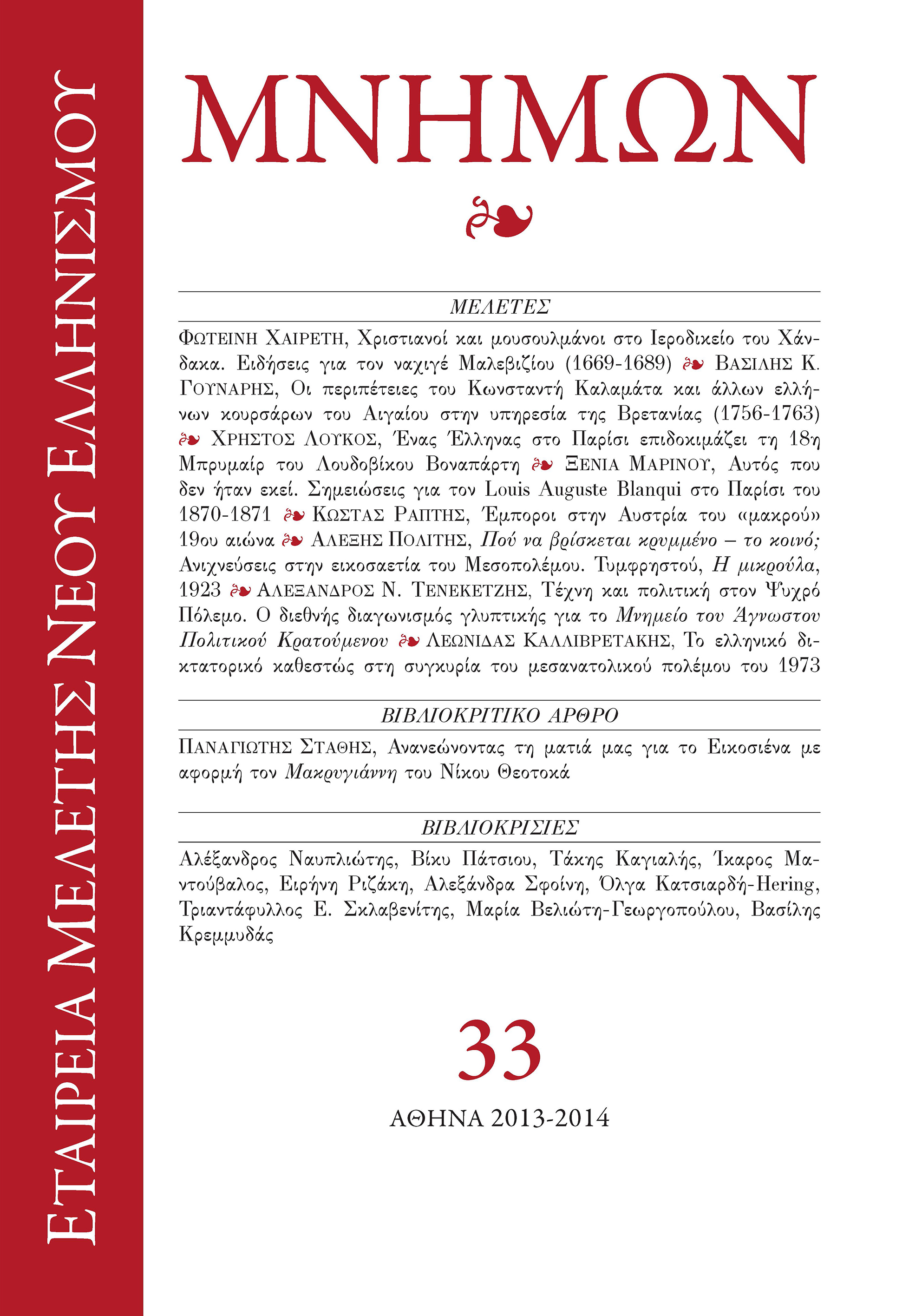ΤΕΧΝΗ ΚΑΙ ΠΟΛΙΤΙΚΗ ΣΤΟΝ ΨΥΧΡΟ ΠΟΛΕΜΟ Ο ΔΙΕΘΝΗΣ ΔΙΑΓΩΝΙΣΜΟΣ ΓΛΥΠΤΙΚΗΣ ΓΙΑ ΤΟ ΜΝΗΜΕΊΟ ΤΟΥ ΑΓΝΩΣΤΟΥ ΠΟΛΊΤΊΚΟΥ ΚΡΑΤΟΥΜΕΝΟΥ
Abstract
Alexandros N. Teneketzis, Art and Politics in Cold War. The International Sculpture Competition for the Monument to the Unknown Political Prisoner
The gradual transfer of the metropolis of the western art world from Paris to New York and specifically in circles around the Museum of Modern Art (MOMA) under the leadership of Alfred H. Barr Jr. and with the theoretical foundation by Clement Greenberg, but practically under the guidance and financing from the CIA, was also visible in the case of public memory and art about the Second World War. The international institution that was the cause for the widespread diffusion of the artistic standards grown in USA was the “International Sculpture Competition for the Monument to the Unknown Political Prisoner”, which was organized under the auspices of the Institute of Contemporary Arts (ICA) in London and the Tate Gallery, but actually with the encouragement, blessings and supervision of the CIA. The competition was from the beginning a large turnout and the proposals submitted until January 1953 surpassed 3.500 –mainly abstract or semiabstract stylistic suggestions. The biggest names at the time in the international arena of sculpture in West took part, while artists from the Eastern Bloc boycotted the process. Therefore were precluded any realistic academic representative works and of course any relationship with socialist realism, giving thus the tone for both the style, and for all other future monuments in the western world. Eventually, the first prize of 2.500 pounds awarded to the British sculptor Reg Butler, unknown to the general public until that time but with a decisive commitment to abstraction. However, the work of Butler was never completed, principally because of the changing international circumstances and relationships after the death of Stalin in ’53 and Khrushchev’s secret speech in ’56. The new “Thaw” era in EastWest relations imposed the final rejection in 1960. A public monument like that of Butler’s, which would refer to the previous tense situation, was no more possible. Nevertheless, the dual objective of recognition and legitimization of abstract art in the western world and at the same time of the weakening of socialist realism and therefore of communism was promoted and achieved up to a certain degree.
Article Details
- How to Cite
-
ΤΕΝΕΚΕΤΖΗΣ Α. Ν. (2014). ΤΕΧΝΗ ΚΑΙ ΠΟΛΙΤΙΚΗ ΣΤΟΝ ΨΥΧΡΟ ΠΟΛΕΜΟ Ο ΔΙΕΘΝΗΣ ΔΙΑΓΩΝΙΣΜΟΣ ΓΛΥΠΤΙΚΗΣ ΓΙΑ ΤΟ ΜΝΗΜΕΊΟ ΤΟΥ ΑΓΝΩΣΤΟΥ ΠΟΛΊΤΊΚΟΥ ΚΡΑΤΟΥΜΕΝΟΥ. Mnimon, 33, 185–205. https://doi.org/10.12681/mnimon.860
- Issue
- Vol. 33 (2014)
- Section
- ARTICLES




